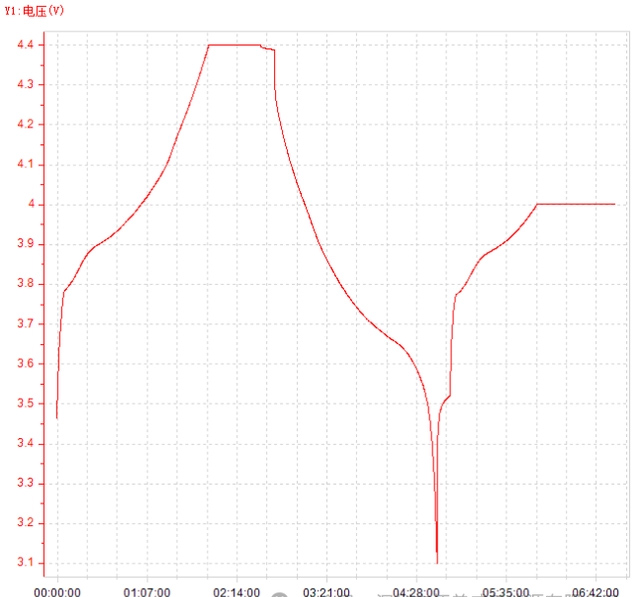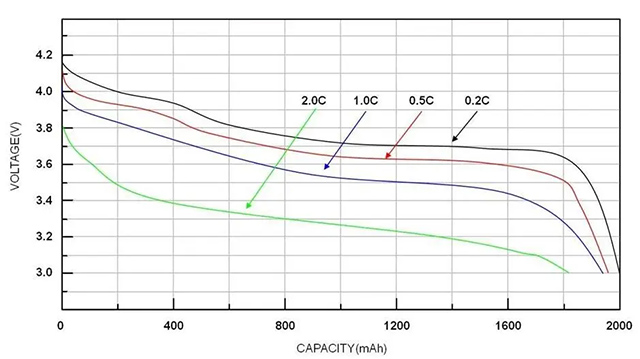Lithium-ion batteries are pivotal in powering many of today’s devices, from smartphones to electric vehicles. Understanding the key specifications of these batteries can help optimize their use, extend their life, and ensure safety. Here, we break down eight essential parameters to know about lithium-ion batteries.
Capacity
Battery capacity, often expressed in ampere-hours (Ah) or milliampere-hours (mAh), is a primary performance indicator.
This parameter shows the amount of charge a battery can deliver under specific conditions (discharge rate, temperature, cutoff voltage, etc.). For instance, a 1000 mAh battery can discharge 1 A for 1 hour, translating to around 3600 coulombs (C).
Actual Capacity
Refers to the actual dischargeable energy a battery provides under certain conditions, which can vary with temperature, humidity, and charge/discharge rates.
Theoretical Capacity
The ideal capacity if all active materials fully participate in reactions, representing a best-case scenario.
Rated Capacity
Listed on the battery’s label, indicating sustained capacity under standard operating conditions.
Factors like electrode size, cutoff voltage, and temperature influence capacity, which is why, for example, smartphones may exhibit reduced battery capacity in cold weather.
Nominal Voltage
This is the potential difference between a battery’s positive and negative terminals.
A lithium battery’s discharge curve generally drops steeply between 4.3V and 3.7V, with the longest duration near 3.7V. For this reason, 3.7V is commonly chosen as the nominal voltage.
Lithium batteries are usually rated at either 3.7V or 3.8V, with maximum charging voltages of 4.2V or 4.35V, respectively.

Energy Density (Units: Wh/kg or Wh/L)
Energy density represents the amount of energy stored per unit mass or volume, with “gravimetric energy density” (Wh/kg) and “volumetric energy density” (Wh/L) as common measurements.
For lithium-ion batteries, the energy density typically ranges from 100 to 200 Wh/kg, a factor that’s limited by current technology. In applications like electric vehicles, energy density constrains range, leading to concerns like “range anxiety.” To achieve a 500 km range, for example, battery energy density would need to exceed 300 Wh/kg.
Charge/Discharge Rate (Unit: C)
The C-rate indicates how quickly a battery can be charged or discharged.
Higher or lower C-rates specify maximum charge/discharge currents, and detailed specifications help users understand safe, optimal usage, particularly in applications like electric vehicles where continuous and peak C-rates at different temperatures are essential.

Cycle Life and Depth of Discharge (DoD)
Cycle Life
Expressed as the number of full charge-discharge cycles a battery can complete before capacity drops to 80% of the rated value.
Depth of Discharge (DoD)
This indicates how much of the battery’s capacity is discharged in a cycle.
A battery rated for 80% DoD, for instance, can consistently discharge to 20% of its initial charge level without significant degradation.
Calendar Life measures lifespan under varying storage and usage conditions, although this figure is harder to test and may not always be provided by manufacturers.
Internal Resistance (Unit: Ω)
Internal resistance impacts efficiency by creating heat during charge/discharge cycles. Lower resistance enhances battery longevity and discharge rates, while high resistance leads to more heat, quicker degradation, and performance constraints.
Self-Discharge
Lithium-ion batteries lose capacity over time, even when not in use. This self-discharge rate is typically expressed as a percentage per month. If left idle for extended periods, self-discharge can lead to deep discharge, which permanently affects battery performance. Therefore, regular charging is recommended for stored lithium-ion batteries.
Operating Temperature Range
Lithium-ion batteries function best within a specified temperature range, often from -20°C to 60°C. Operating outside of this range can impact performance and shorten battery life. Batteries made from different materials may have different optimal temperature ranges. For instance, high temperatures may accelerate aging, while low temperatures reduce capacity. Storage temperature is equally crucial, as extreme temperatures can cause irreversible damage.
Conclusion
Understanding these eight key parameters helps ensure that lithium-ion batteries are used optimally and safely. With this knowledge, users can make informed choices to maintain battery health and maximize their devices’ performance over time.
 sales@batterydeji.com
sales@batterydeji.com




